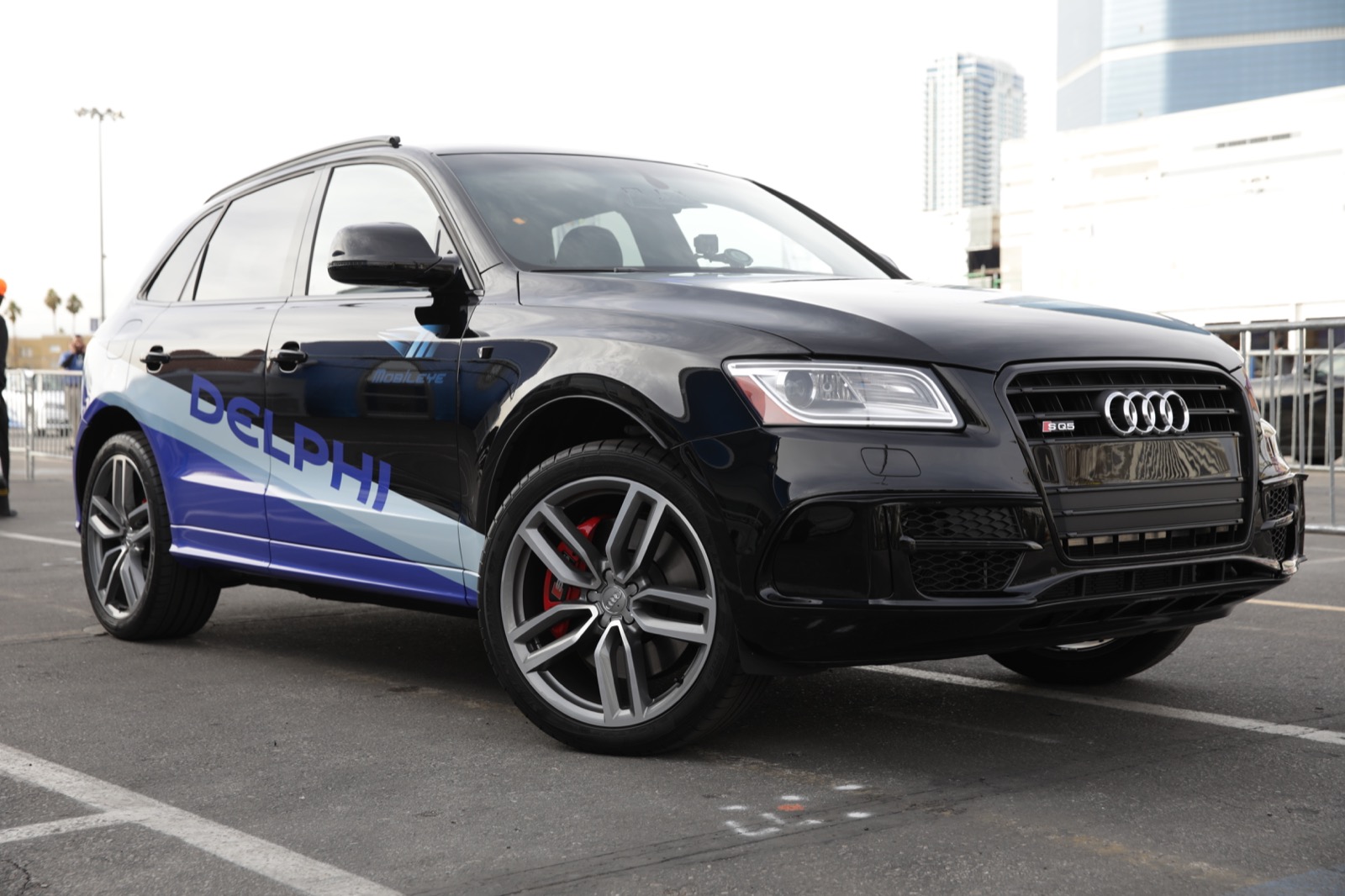Delphi has been coming to CES for 21 years as of this year, the company’s CTO Jeffery Owens told me on Tuesday before we embarked on a short tour of downtown Las Vegas aboard an Audi equipped with Delphi’s latest self-driving tech. In the beginning, Delphi had to work pretty hard to get its automaker partners to pay attention to its efforts to push vehicle tech forward, but now it’s in good company at CES, with automakers coming from far and wide to scout out the future of cars.
The Delphi autonomous demo automobile this year is an Audi equipped with a range of tech that carmakers are sure to find appealing, given the intense and growing interest in autonomous and advanced driver assistance systems (ADAS). Working with Mobileye, Delphi has integrated optical cameras and image processing tech from Mobileye pretty seamlessly throughout the car’s exterior, along with LiDAR and radar sensors. The optical sensor output actually exceeds the car’s needs, Owens explains, but that’s useful in a prototype like this one, and the cameras now handle about as much sensory data gathering as the LiDAR and radar arrays, giving a much higher resolution final fused sensory picture.
More data is useful not just for helping to make sure the car pays attention to what it’s supposed to, but also helping to make sure it can more accurately evaluate what isn’t worth its time. There’s far more extraneous data than pertinent info in your average city drive, for instance. And all of this is handled by computers that boast ample processing power, onboard the vehicle.
Those computers are also improved on the test vehicle that Mobileye brought to CES — and perhaps most impressively, the computers are also near impossible to spot. Typical testing vehicles demonstrating self-driving capabilities have essentially no cargo space in the trunk, as it’s taken up by stacks of powerful processing units. Not so in the Delphi Audi, which has enough trunk space to easily handle a heavy haul of groceries.
It’s weird to talk about having a standard trunk as a feature, but for a car that drove as smoothly as Delphi’s vehicle did without a human controlling it, it’s actually a really big deal. Delphi’s car also managed to handle with aplomb impolite drivers cutting in, but without feeling like it was overly erring on the side of caution. It felt, in short, like a good driver was behind the wheel, which is exactly what you’d want.
[gallery ids="1434123,1434127,1434125,1434122,1434121,1434119,1434118,1434117,1434116,1434115"]
Delphi also uses Road Experience Management tech from Mobileye, which is basically a crowdsourced, constantly updated map of the roads that uses input from any vehicles equipped with Mobileye’s sensors. That info populates Delphi’s visual representation of what’s on the road, along with input from the car sensors, and connected infrastructure signals, like traffic lights telling the car when the lights will change.
The drive system that Delphi showed us works very well on the Las Vegas roads, but to some extent that’s to be expected, because it’s a course it’s run fairly often. But Delphi says we still have a while before its ships — the company is looking at 2019 for a production-ready system, which means actually in cars going off dealer lots by 2020 or 2021.
